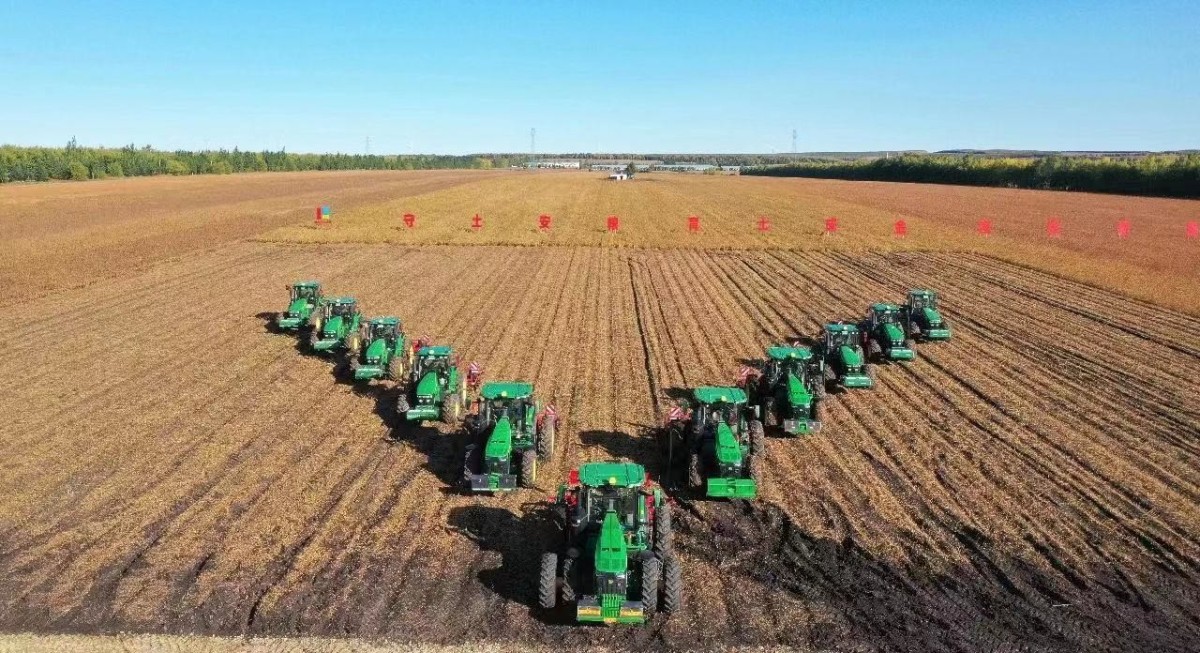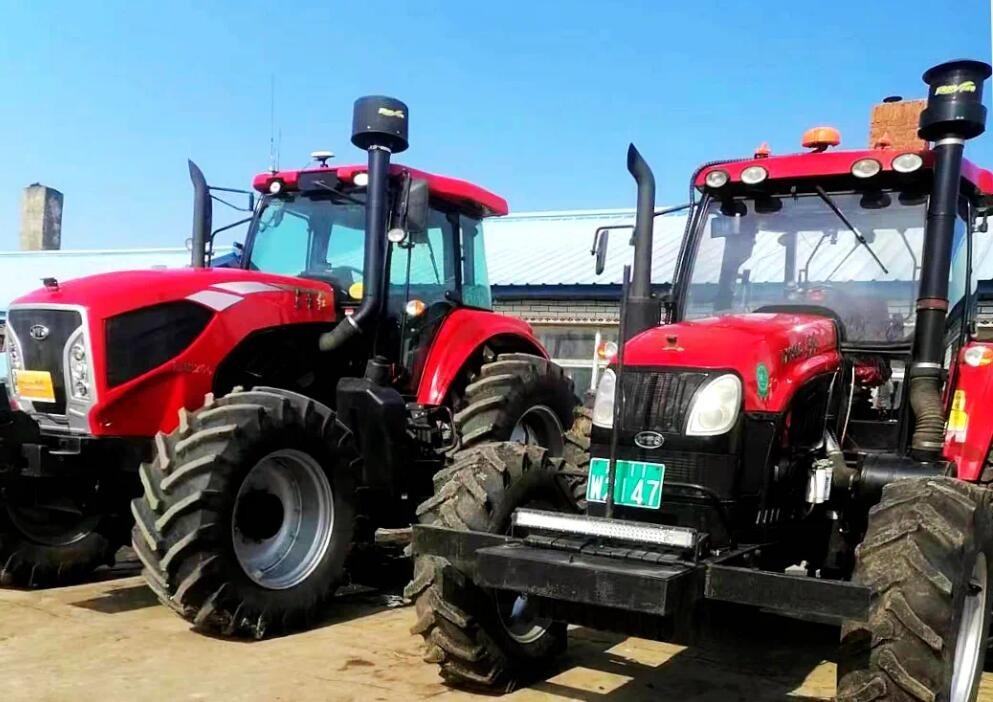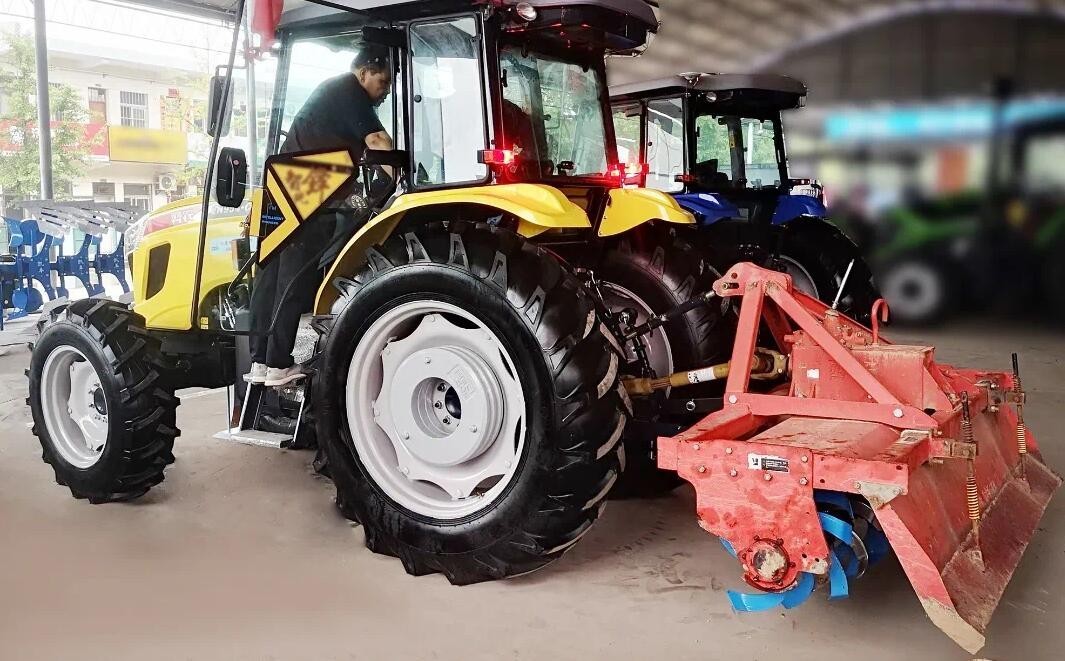Tractors perform life and death at a speed of 200 companies who can survive
Recently, I have conducted in-depth inspections of the two largest tractor industry clusters in China, Weifang, Shandong and Luoyang, Henan. During this period, I had in-depth exchanges with the management of a multinational company, which is a supporting enterprise for agricultural machinery. One of their concerns is the development trend of the domestic tractor industry, especially which tractor companies will survive in the future and which tractor companies they should cooperate with for the long term.

The author believes that whether a company can survive in the fierce competition of the market is determined by competition itself. A market economy is like a jungle, where the fittest eat the fittest. On the other hand, it is also determined by the company's strategic positioning, background, and mysterious forces hidden behind the company. Sometimes companies perform in front of the stage, but there is someone else behind the scenes who takes the lead. So, after the end of the first industry cycle in the tractor industry and the arrival of the second industry cycle, who among the more than 200 domestic tractor whole machine enterprises can survive?
1、 Top companies with absolute competitive advantages
From a global perspective, the tractor industry has a clear trend of stratification and industrial concentration. In the global market, multinational giants from Europe, America, and Japan, such as John Deere, Kaisner Netherlands, Aiko, Krass, Kubota, and Deutzfal, have an increasing market share and strength. The "Matthew effect" is the main feature of the global agricultural machinery market.
From a national perspective, the trend of centralization in the tractor industry is also very evident. According to data released by the Distribution Association, tractor enterprises above designated size have a CR6 market share of about 78% in 2022, and the trend of industry resources and market share concentrating towards several top brands is also very obvious. The long tail phenomenon in the market is rapidly ending, with the strong remaining strong and the trend of oligopoly has emerged, leaving little time for small enterprises.

Overall, in the domestic market, there is no doubt about the later development of leading companies with absolute competitive advantages, including multinational corporations such as John Deere, Kaisnew Netherlands, Aiko, Krass, Kubota, and Deutzfal, as well as domestic leading brands such as Dongfanghong, Weichai Lewo, and Dongfeng Agricultural Machinery. As expected, the competitive strength of these large enterprises will become stronger, and market share will continue to flow to these large enterprises and brands, The Matthew effect of the strong maintaining strength will continue to strengthen.
At the same time, the main battlefield and main participants of the domestic tractor industry will mainly be these large enterprises and the mainstream market they occupy. They are the main melody of the times, and they will also lead the development of the domestic tractor industry. They will also be the main engine of the domestic agricultural machinery industry.2、 A powerful faction with a strong background and the ability to fight long-lasting battles
Those who study military understand the truth that "what we fight in war is grain and grass". On the surface, agricultural machinery enterprises compete with each other in terms of products, but behind the products lies the strong background and hidden strength of the enterprises that ordinary people cannot see. Some enterprises may not appear to have outstanding sales volume on the surface, but they can achieve stable and stable operations, unaffected by industry cycle fluctuations and the aggressive behavior of competitors, Be able to gradually advance according to the established strategic goal direction.
There are many companies in the tractor industry that possess this characteristic, such as Yituo Dongfanghong, a Hong Kong H-share and Shanghai A-share listed company, backed by a powerful state-owned machinery group; Behind Weichai Lewo are well-known companies such as Weichai Group and Shandong Heavy Industry; Behind Dongfeng Agricultural Machinery is Donghua Chain, which ranks first in Asia and second in the world; Behind Yingxuan Heavy Industry is Yingxuan Group, a global leader in edible alcohol and citric acid.

3、 Enterprises that have obtained shipping tickets and successfully landed
Market competition follows the law of the jungle. In the jungle law, the criteria for elimination are not fixed and unchanging, but constantly changing, and the survival line of organisms is constantly improving.
The result of the jungle rule is that at the beginning of each industry, there are hundreds, thousands, or even tens of thousands of companies, but by the end of the industry cycle, 90%, 99%, or even 99.9% of companies will be ruthlessly eliminated, and only 10%, 1%, or even 0.1% of companies will survive.
Assuming that 10% will ultimately survive, the subsidy system in 2022 shows that there are 247 tractor brands in China, and approximately 25 at a 10% ratio.
Assuming that the ultimate survivor is 25, the sales scale of over 200 enterprises, especially small and medium-sized enterprises, needs to reach the level of 25th place. If the sales revenue of the 25th place is 500 million, then a company can only be safe if it exceeds 500 million. Failure to meet this threshold is bound to result in being eliminated.

So, more than 200 domestic tractor companies must reach the level of last surviving enterprises in terms of strength and scale before the end of this industry cycle. Only by obtaining this ticket can they have the opportunity to enter the next industry cycle and participate in the competition of the second cycle.
4、 Invisible champion of segmented markets
There is a company in Hebei called Shijiazhuang Baodong Agricultural Machinery, which is not familiar to many people in the agricultural machinery industry, but is well-known among orchard growers.
Shijiazhuang Baodong specializes in producing orchard tractors. Compared with its competitors and more than 200 domestic tractor companies, Baodong has the most complete product line and the most models of orchard tractors. The biggest feature of Baodong orchard tractors is their low chassis, which can be used even in old orchards. In order to make it easier for fruit farmers to work, Baodong has also developed rotary tillers, fertilizers, spreaders, sprayers, and trenching machines that are matched with low and small four-wheel tractors Among dozens of tools such as burying vines, it can be said that in the field of orchard mechanization, Shijiazhuang Baodong is the most professional.
The orchard tractors deeply cultivated by Baodong in Shijiazhuang are a typical segmented market, and Baodong is the hidden champion of this segmented field of orchard tractors.

It doesn't matter whether a segmented market is good or bad, what is suitable is the best.
After various segmentation, different types of enterprises will be provided with different development spaces. Some segmented markets are suitable for large enterprises, while others are suitable for small enterprises. The type of market a company chooses will determine its future and even its ultimate fate.
Choosing a niche market can easily become a "general in the short", which means becoming an invisible champion in the niche field. If a company does not have great ambitions, it can maintain a long-term competitive advantage in a niche market, but there are both advantages and disadvantages. The niche field is like a safe haven. If a company chooses to become a big fish in a small pond, it loses the opportunity to become a whale in the ocean.
5、 Enterprises with both cost and scale advantages
The ultimate goal of enterprise competition is only two: cost competition and scale competition. The level of cost control determines whether a company can make a profit, while the size of the enterprise determines its position in the market and whether it has a scale advantage. In mature industries, products are highly homogeneous, and the core element of competition between enterprises is scale. Cost can be shared through scale. The larger the scale, the lower the average cost per product, and the price advantage of the product.

In the future, enterprises that already have scale and advantages, while also having cost advantages, will have a greater probability of survival.





